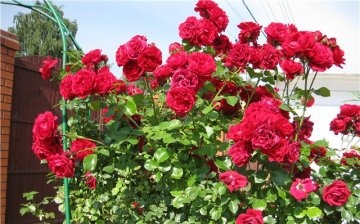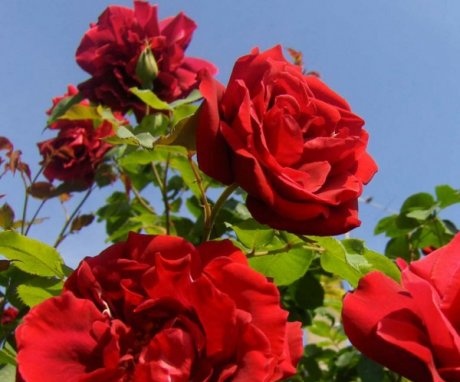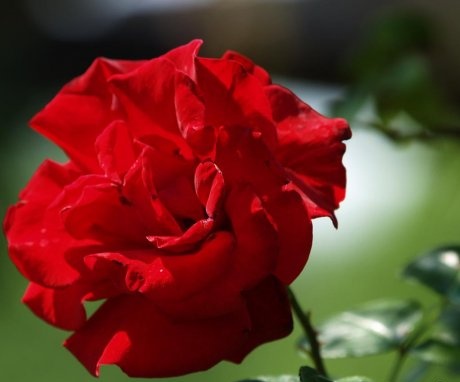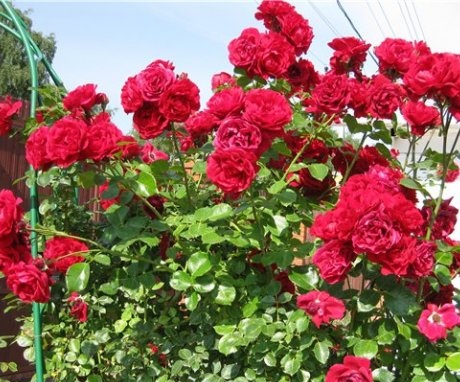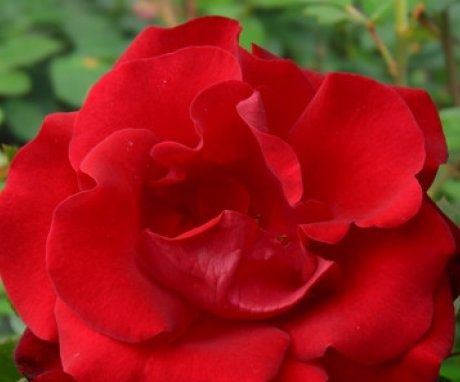Features of the Santana rose variety: care for climbing roses
Climbing roses look like vines. There are many varieties of climbing roses, which differ in shape, color of flowers, amount of flowering per season.
Content:
Variety of climbing roses
Climbing roses are often used in vertical landscaping. The "Queen of Flowers" not only serves to cover the walls of buildings, but also gives the site an exquisite look. Gardeners cannot come to a single classification. There is a wide variety of species, varieties and groups of roses, they have the same similarities.
Subgroups, in turn, can be divided into the following groups:
- Semi-plaited
- Climbing
- Curly
They differ in the height to which they are able to climb. The first grow up to 3 meters, the second up to 5 meters, the third up to 15 meters. Curly roses are divided into the following groups: Banks, Lambert, Cordesa, Climing, Multiflora, Vihuriana.
The varieties of the Lambert and Cordes subgroups are best suited for landscaping, since they bloom for a long time. The flowering is lush and constant. The height of these plants is the most suitable for a garden, 2.5 meters, they are not affected by diseases.
Many climbing roses suffer from fungal diseases. Therefore, when choosing a rose variety, they pay attention not only to the shape of the flowers and their color.
Even if the rose blooms beautifully, diseased leaves can ruin the whole look. Therefore, it is important to study precisely this property, how resistant the plant is to parasites.
Landscape designers love to use the Climing variety in their compositions. All flowers have different shades. Until the bud has blossomed, it resembles the shape of a glass, which gives them elegance. The stems are tough, elastic, grow up to 6 meters, do not need support. Climing varieties are more suitable for warm regions, since such long shoots are difficult to cover for the winter.
Climbing roses are also divided into small-flowered and large-flowered. Small-flowered are also called Rambler. Their shoots are also small and thin, very flexible. The flowering period begins in July, flowers can be simple and double. It is easy to care for Rambler, they tolerate frost well.
Rose Santana: description
Climbing rose Santana is one of the brightest representatives of roses. Its flowers are large enough, each up to 10 cm in diameter. This variety is re-flowering.
Flower characteristic:
- The flowers have a velvety surface, their color is rich dark red.
- The flowering period lasts a long time, the flowers completely cover the branches.
- Flowers do not change their appearance after rain and bad weather. In the sun, they shimmer and become even brighter.
- The maximum height of the bush is 3 meters. The branches are elastic and do not need additional support.
- Rosa Santana is resistant to many diseases. More suitable for growing in warm regions, although frost resistance is high.
- If you get close to the bush, you can feel a slight aroma.
It is best to grow a Santana rose against a contrasting background, such as a white building wall or fence. If you grow several representatives, then you will need a support, if several shrubs grow, then they form a powerful scrub.
The foliage of the Santana rose is thick and shiny. It is important that pests do not affect it, therefore, even without flowers, it looks elegant.
For climbing plants, it is important not only that it the upper part was decorative... It will be ugly if the bush is bare. As for the Santana rose, the shoots even at the bottom of the bush branch well.
Flowers do not grow singly, but are collected in a brush of 3-7 pieces. They cover the bush evenly, you can not be afraid that one side will be more colorful.
Climbing rose care
An important point when growing climbing roses is a choice of location. You need to think about this even before buying seedlings or seeds. The place should be well ventilated, but free from pronounced drafts. Roses love sunny places. Better if it is on the south side and a high platform.
Having planted a rose in a good place, there is a chance that it will bloom next year. In addition, it will contribute to rapid and active growth.
The plot does not have to be spacious. For a climbing rose, an area of 50 * 50 cm is enough. The hole in which it is planned to plant a rose must be prepared in advance. She is filled with water and a bucket of manure is brought in there.
When the rose is planted, the top of the shrub is cut off, leaving only 20 cm. This is necessary for a more lush and vigorous growth.
Basic care is provided only in the first year; in the second year, the rose can not be given so much time.
The care is as follows:
- Pruning is carried out in order to form a bush, direct its growth, and eliminate condensation.
- You need to water curly roses once a week, sometimes a little less often, depending on conditions.
- Top dressing is applied according to a certain scheme. The manure that was applied before planting in the hole will work for another 2 years. In addition, roses need organic and mineral fertilizing. For roses, complex peat-mineral nitrogenous fertilizers and mixtures for flowering plants are suitable. During the dormant period, the plants do not need any measures, and during the growing season, climbing plants require 4-5 dressings.
Pruning climbing roses
Pruning takes a special place in the climbing rose care guide. This is an important procedure to be done right at the right time.
If the rose is not cut, it will grow poorly, bloom poorly, hurt. Pruning is also needed to maintain the decorative properties of the rose.
Without pruning, the vines will look like ugly, shapeless thickets. Pruning is needed not only for the normal growth of the rose, but also for giving it the necessary shape. Therefore, it is necessary to trim off asymmetrical and uneven branches.
Young shoots are also cut off. They create extra thickening. It is worth remembering that flowers are formed on last year's shoots, so they are left. Last year's branches are trimmed neatly, you can trim only the tip on which buds have not appeared or blossomed.
Pruning also depends on the group to which the climbing roses belong. The criterion is whether the rose blooms once a year or two.
If the variety blooms once a year, then everything unnecessary is cut off in such a way that no more than 5 annual and last year's shoots remain. If the plant blooms twice a season, then the branch on which the flowers will grow will be formed for about 3 years. After that, they start to fade. Therefore, the main shoots are removed in the fourth year, the rest are left. You can also remove new shoots if they form a thickening. Leave a few annual shoots and no more than 7 flowering ones.
Before the winter period you can also trim. This time, you need to eliminate the longest shoots. For this, a sharp, well-disinfected knife is used. The cut is processed with garden pitch. Rose is an unpretentious plant. With a minimum of effort, you can create a gorgeous garden that all neighbors will envy.
More information can be found in the video.






